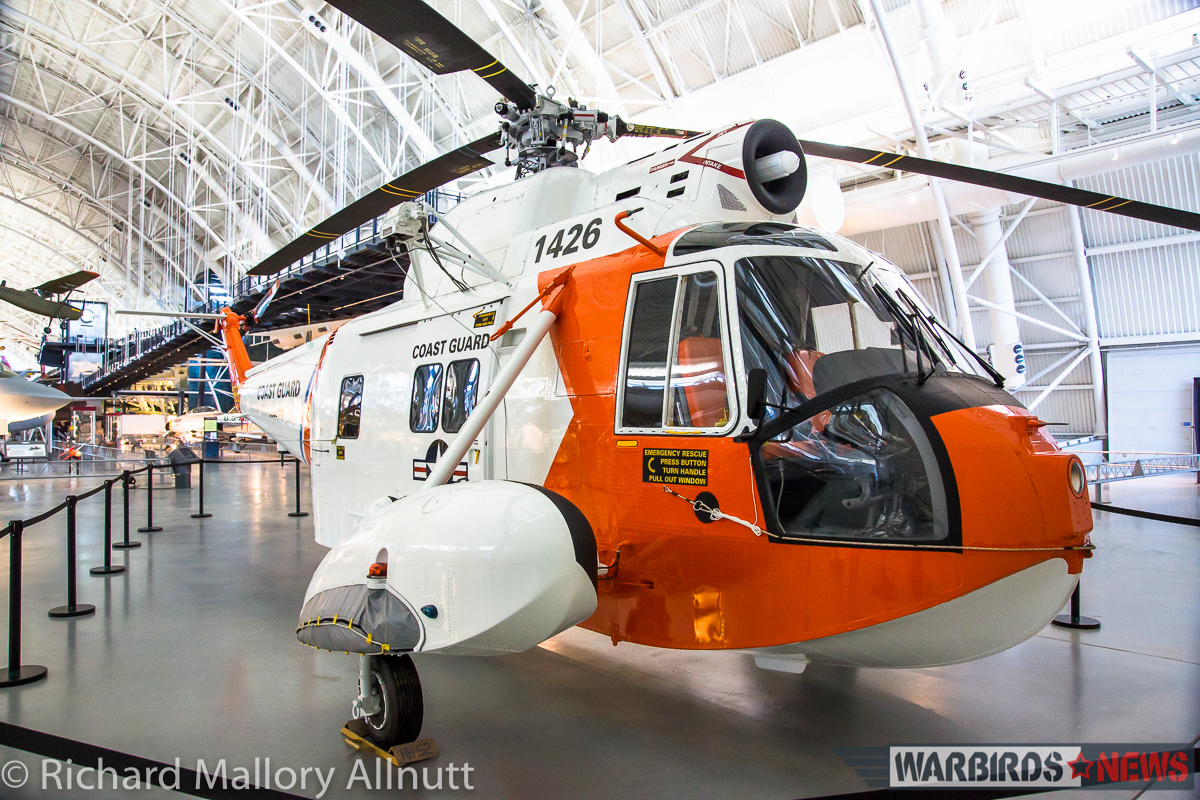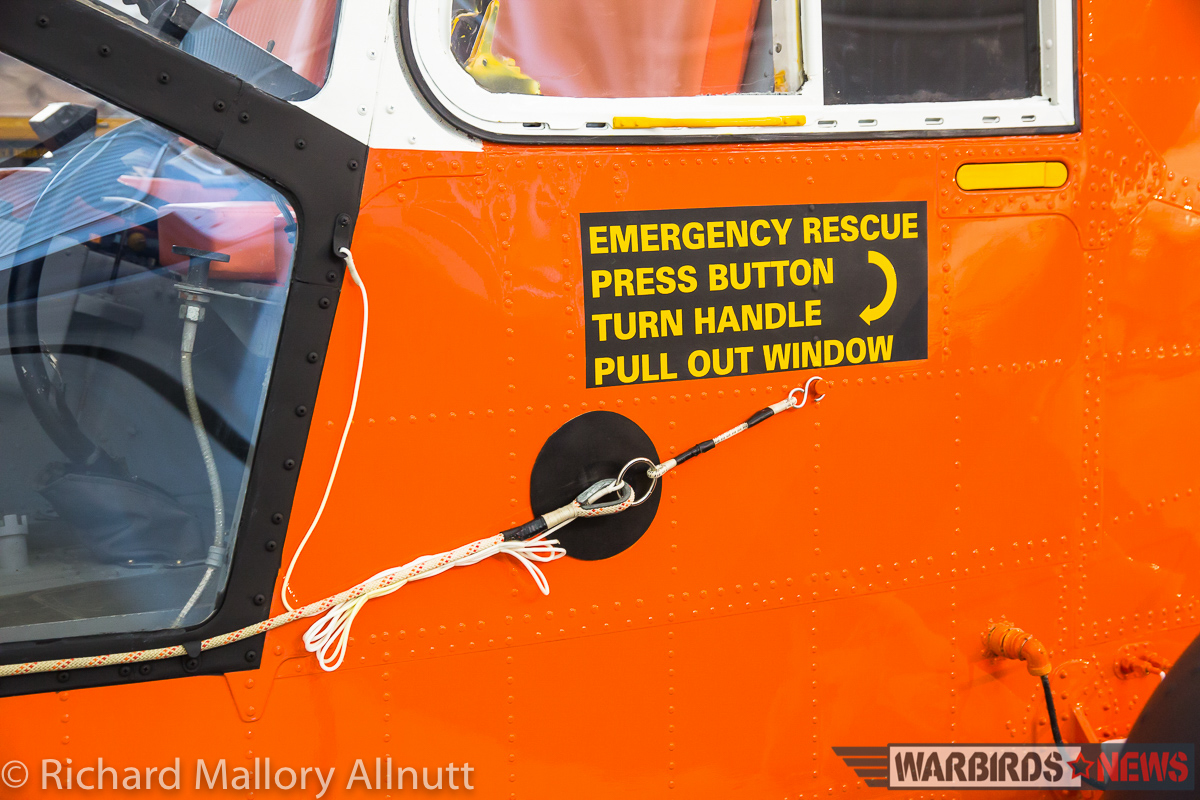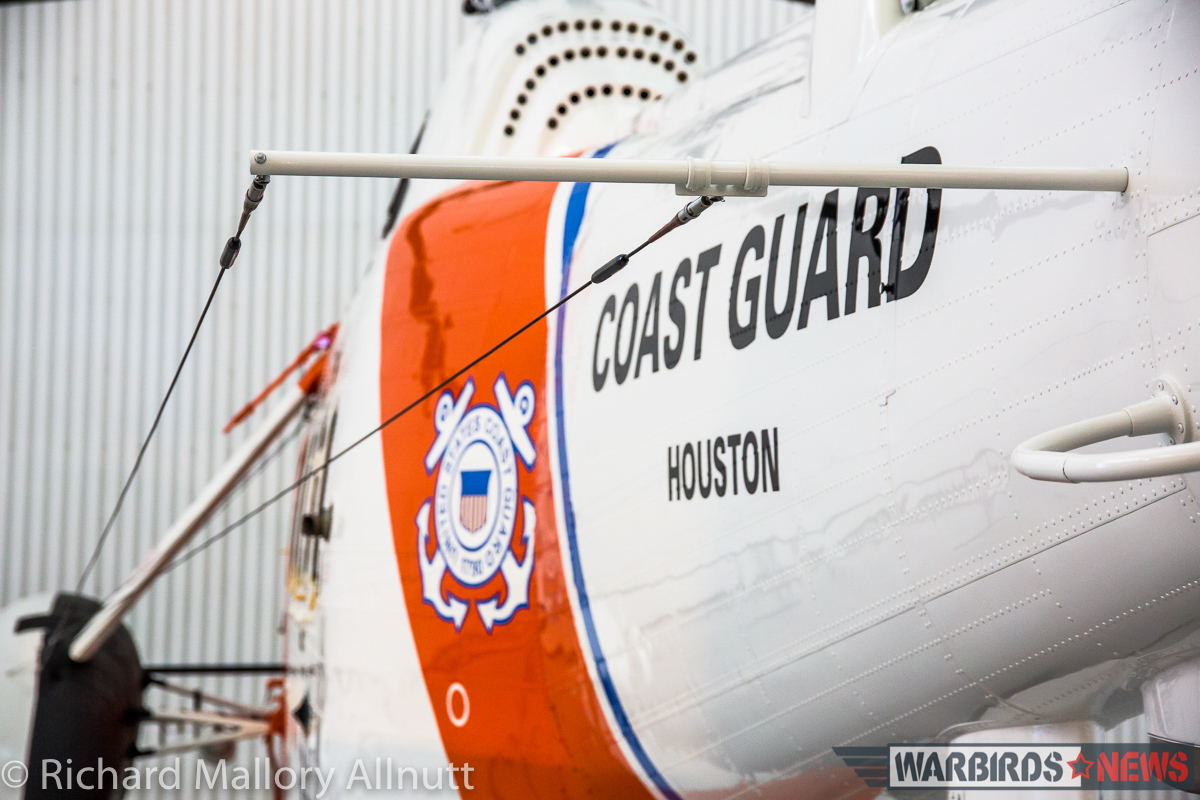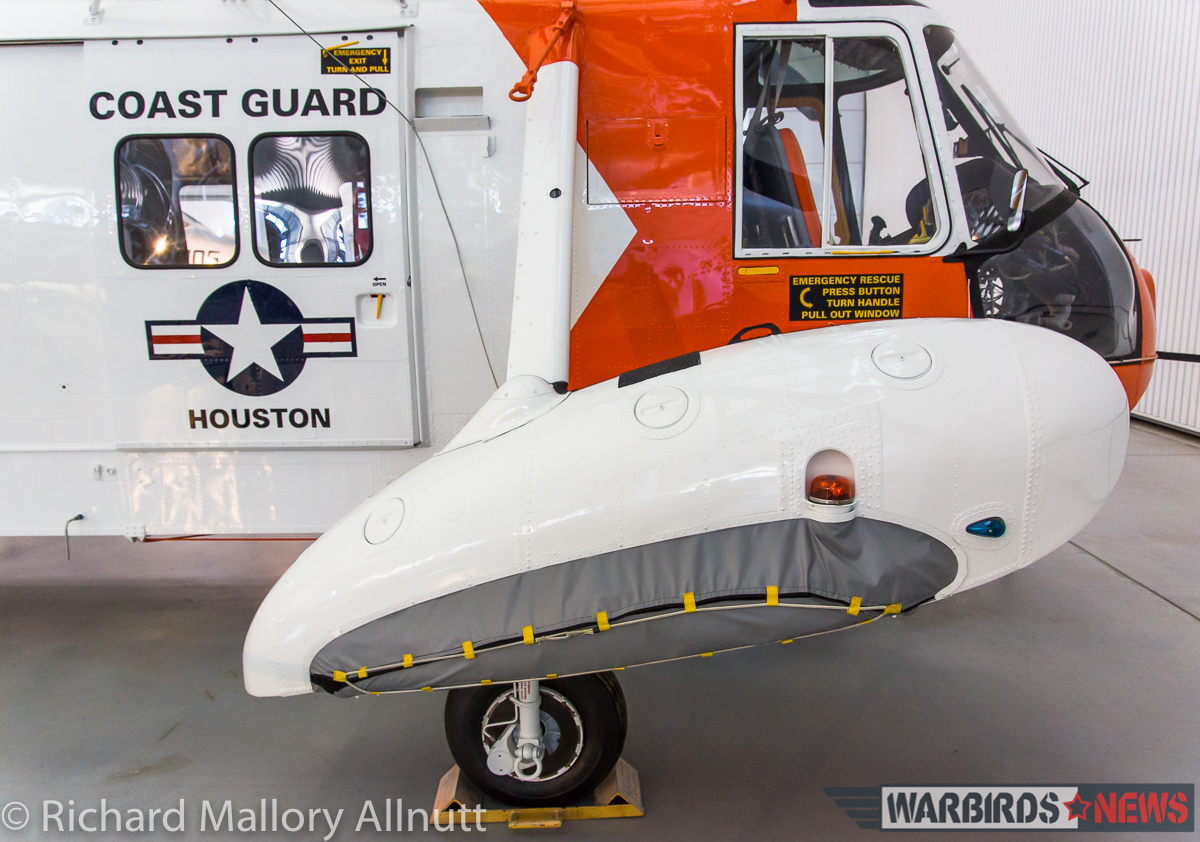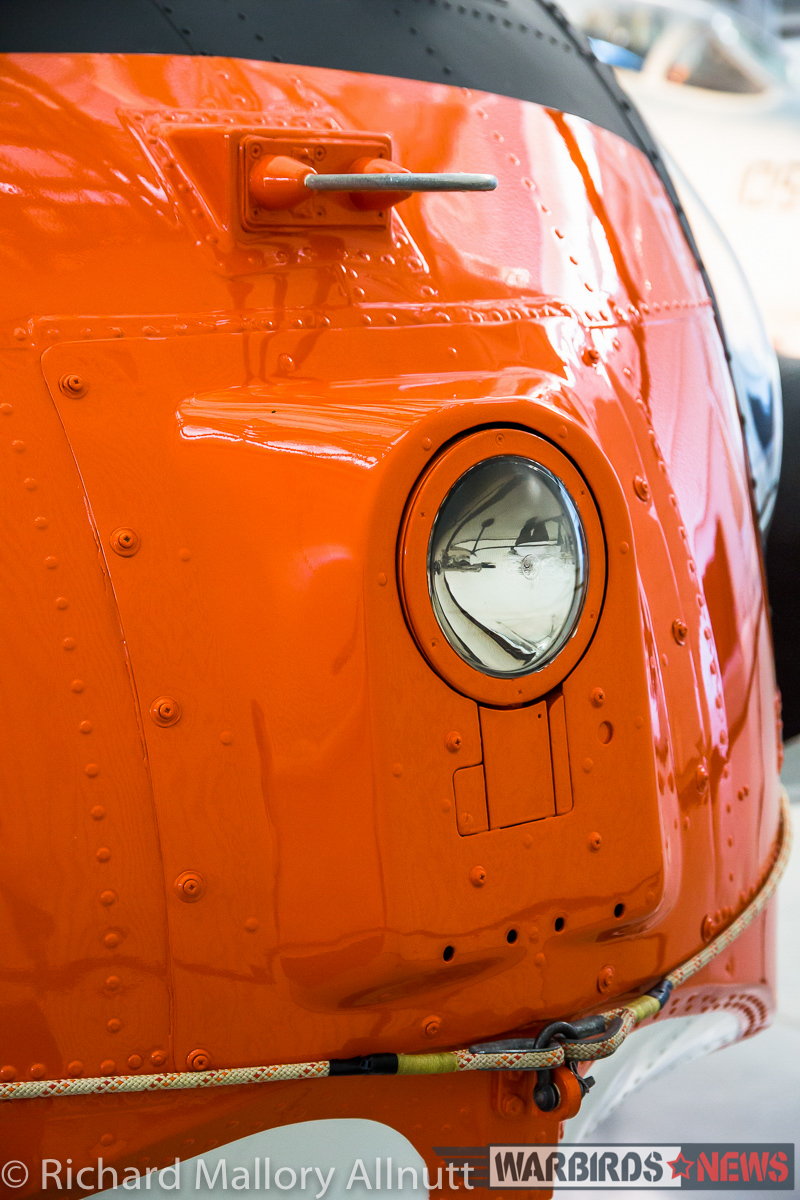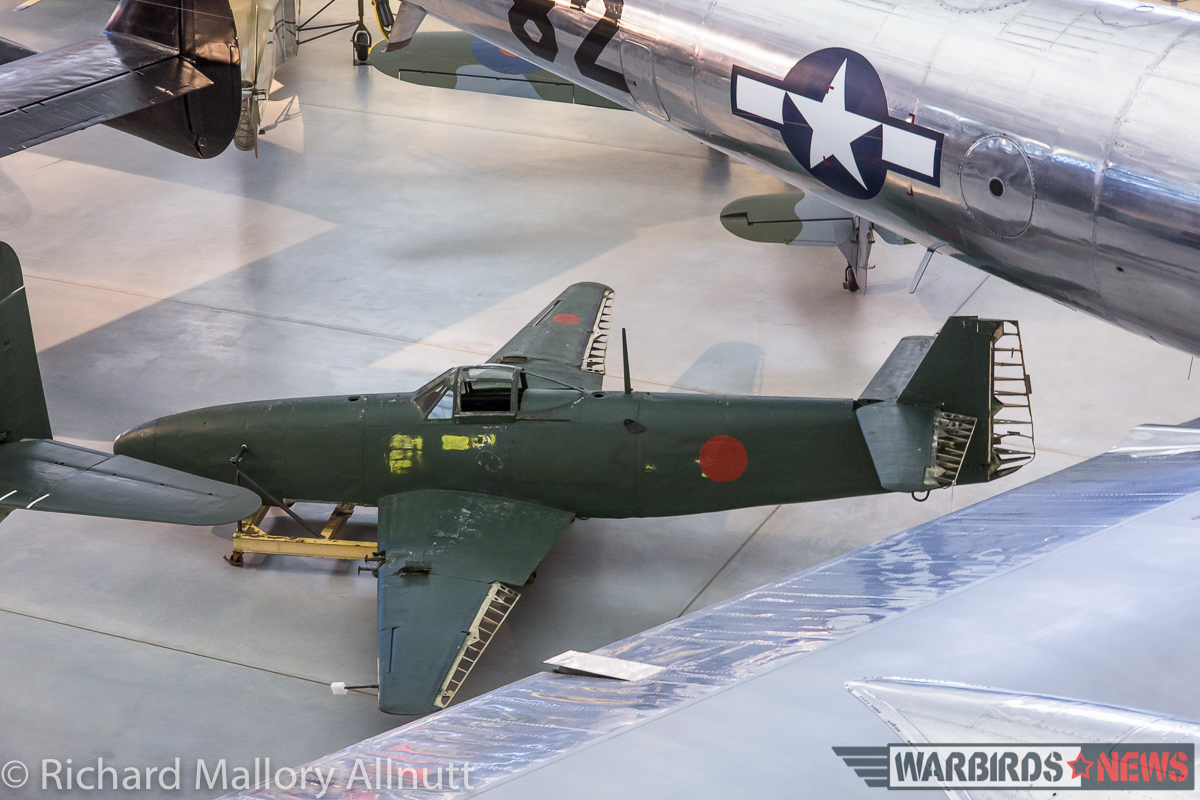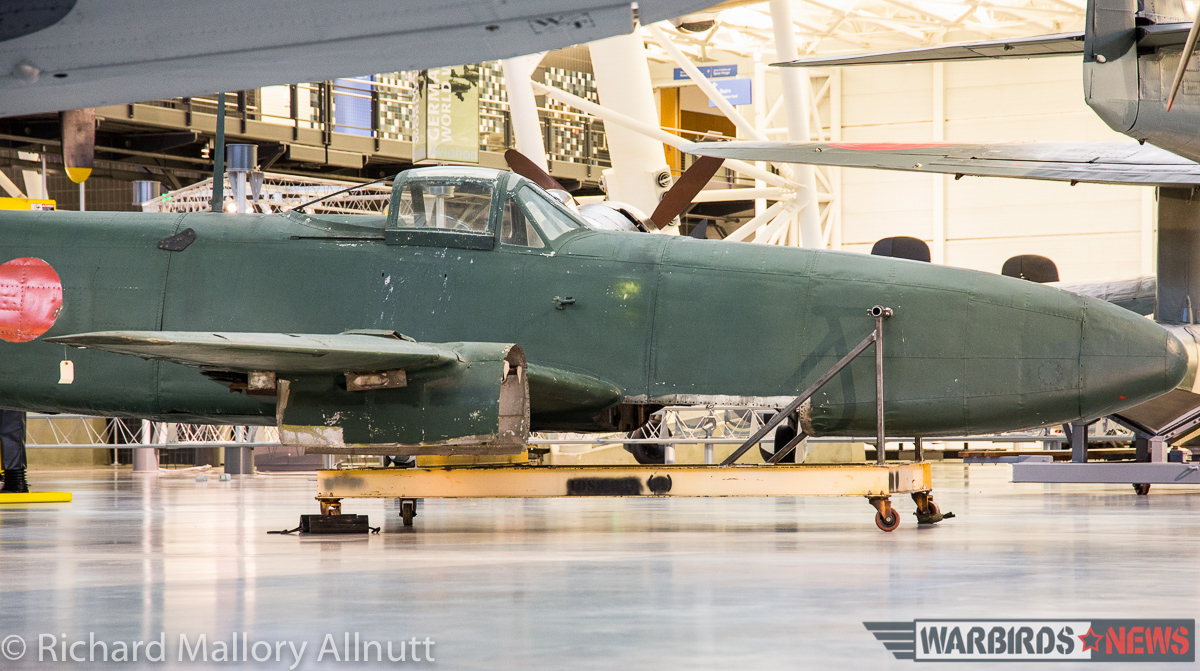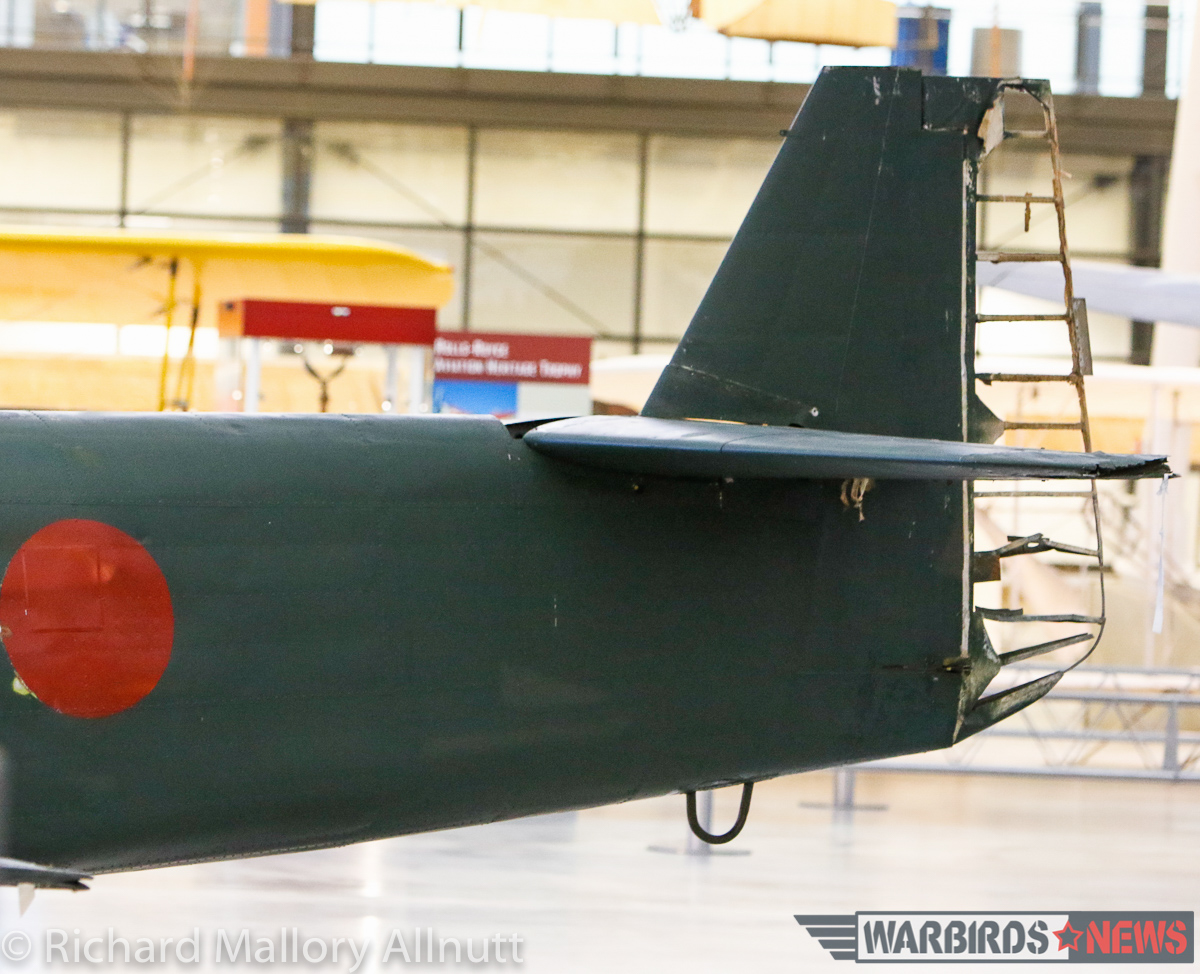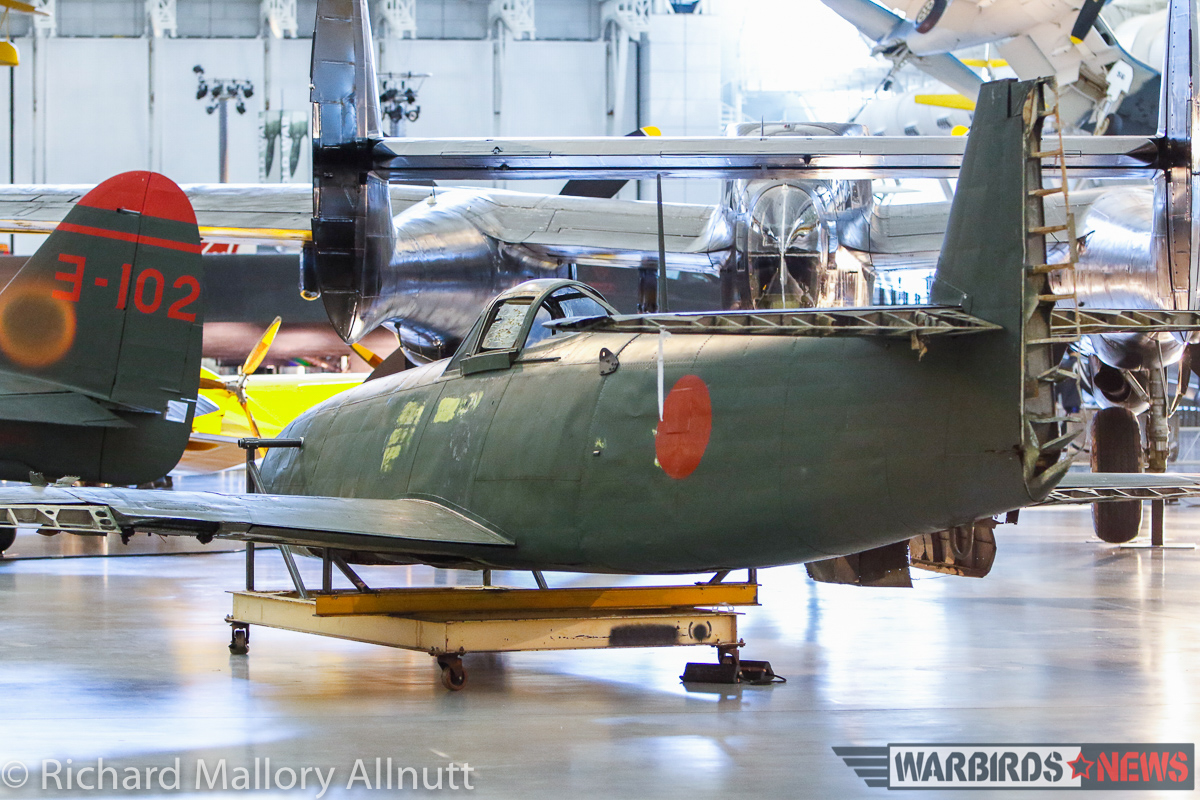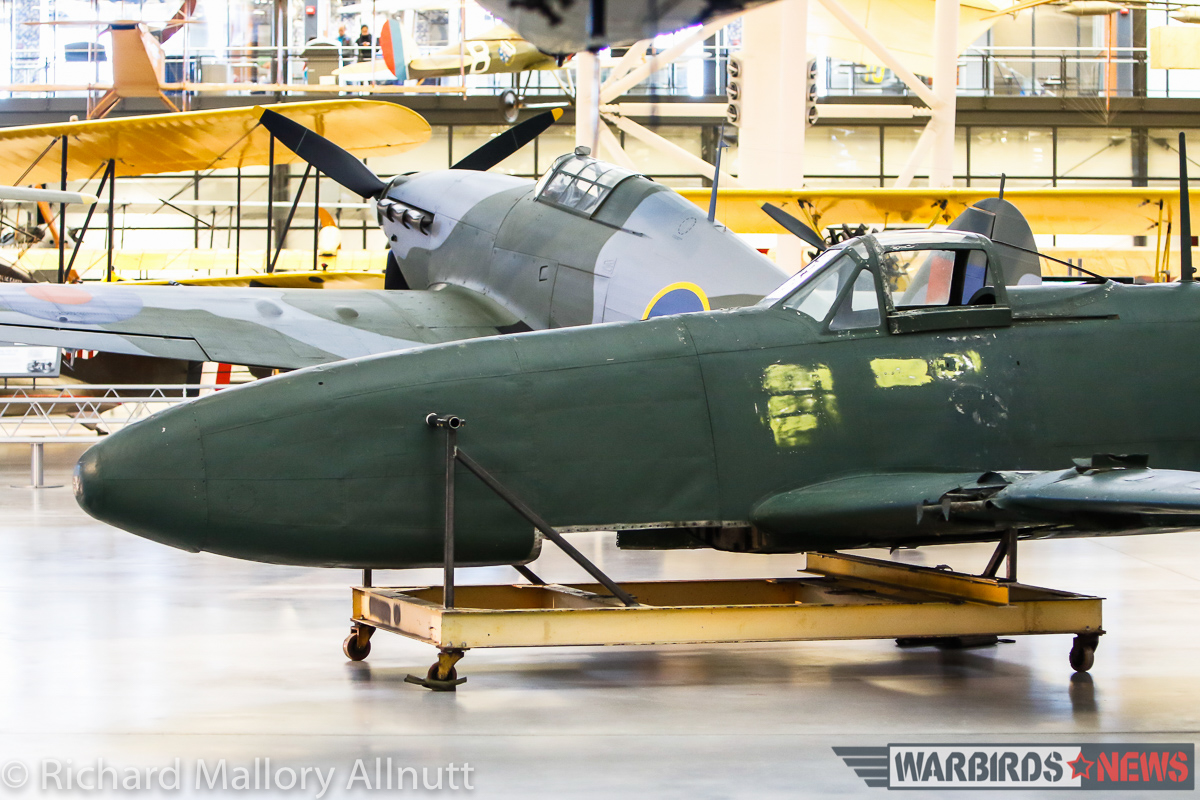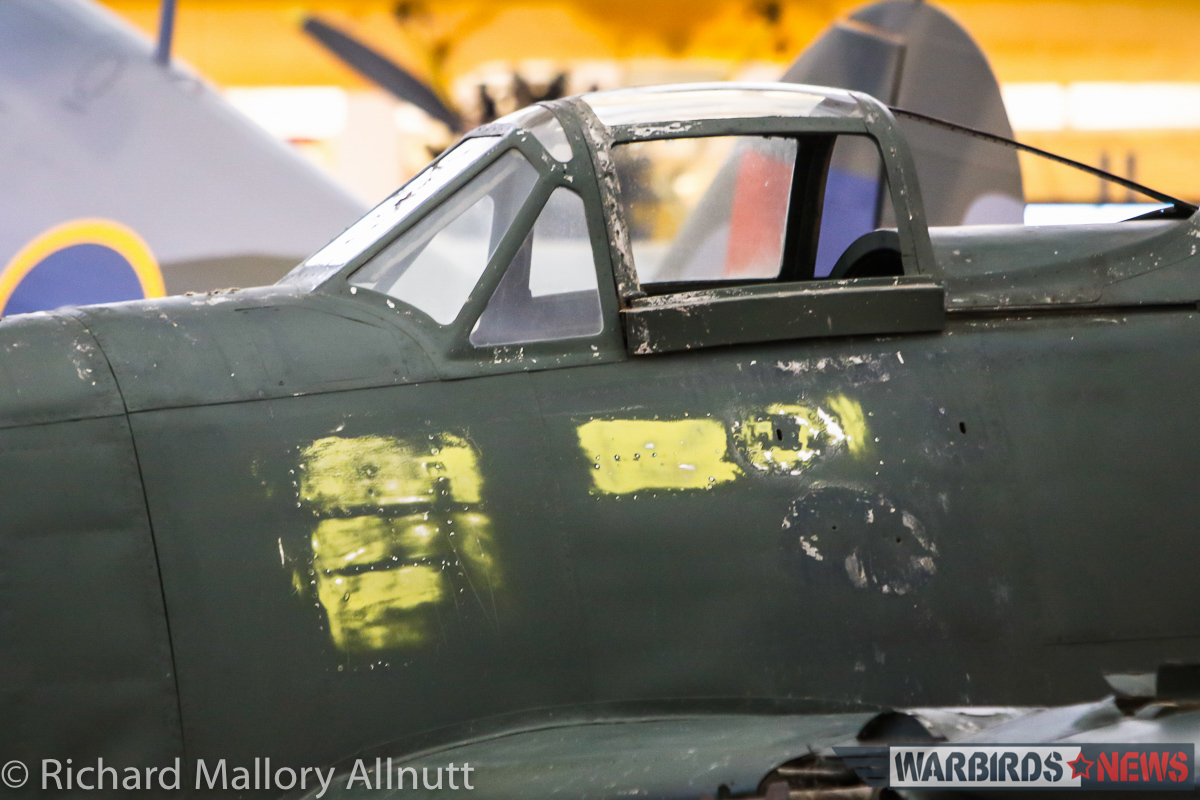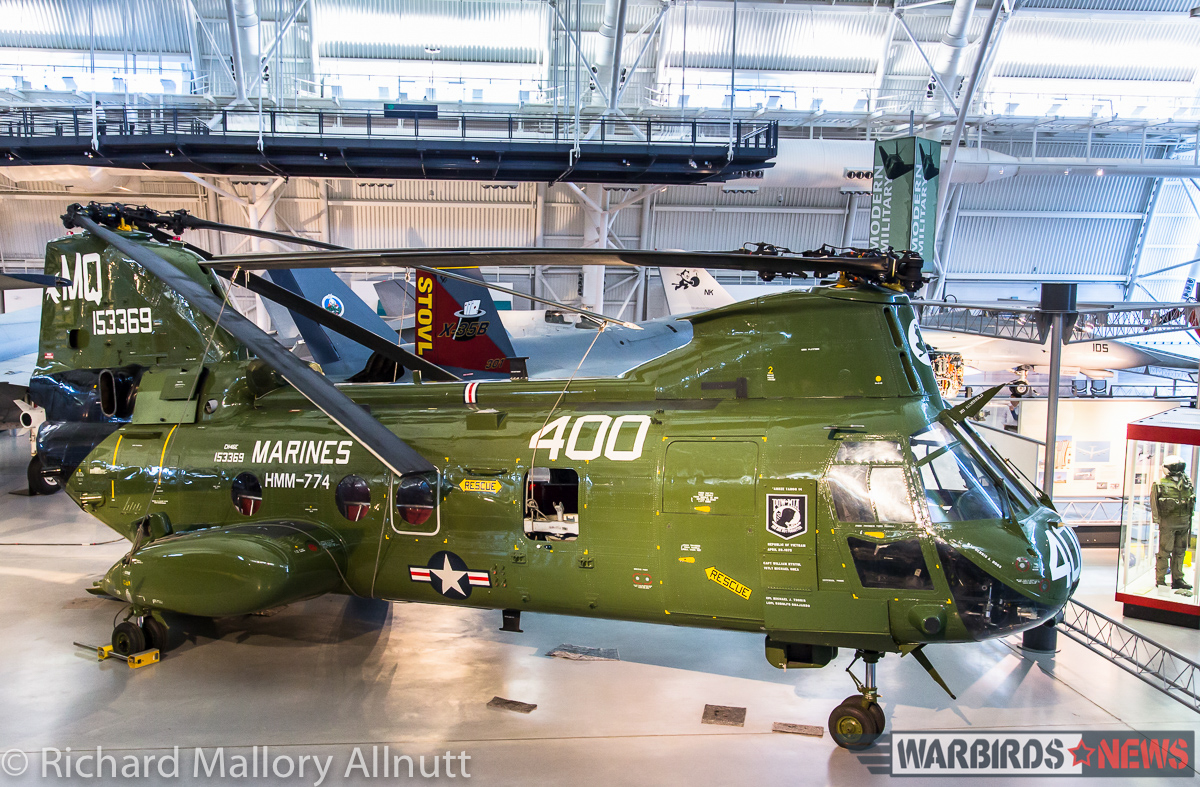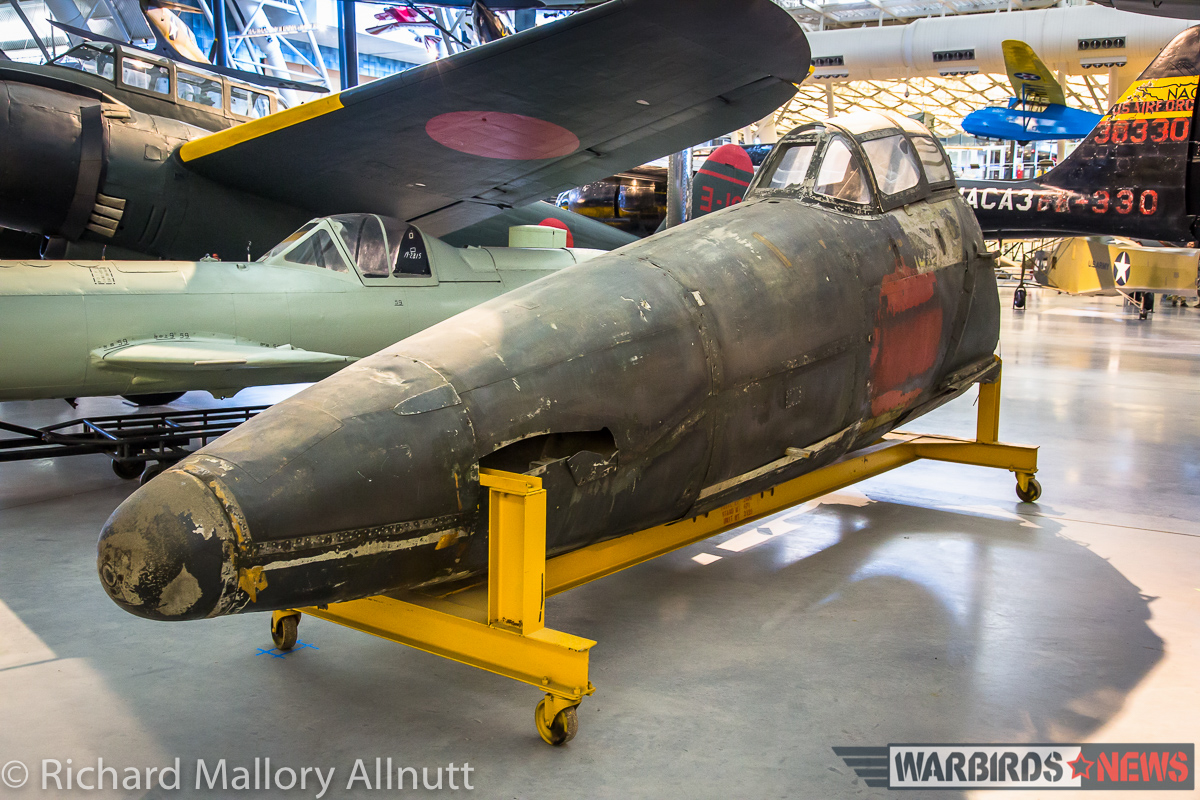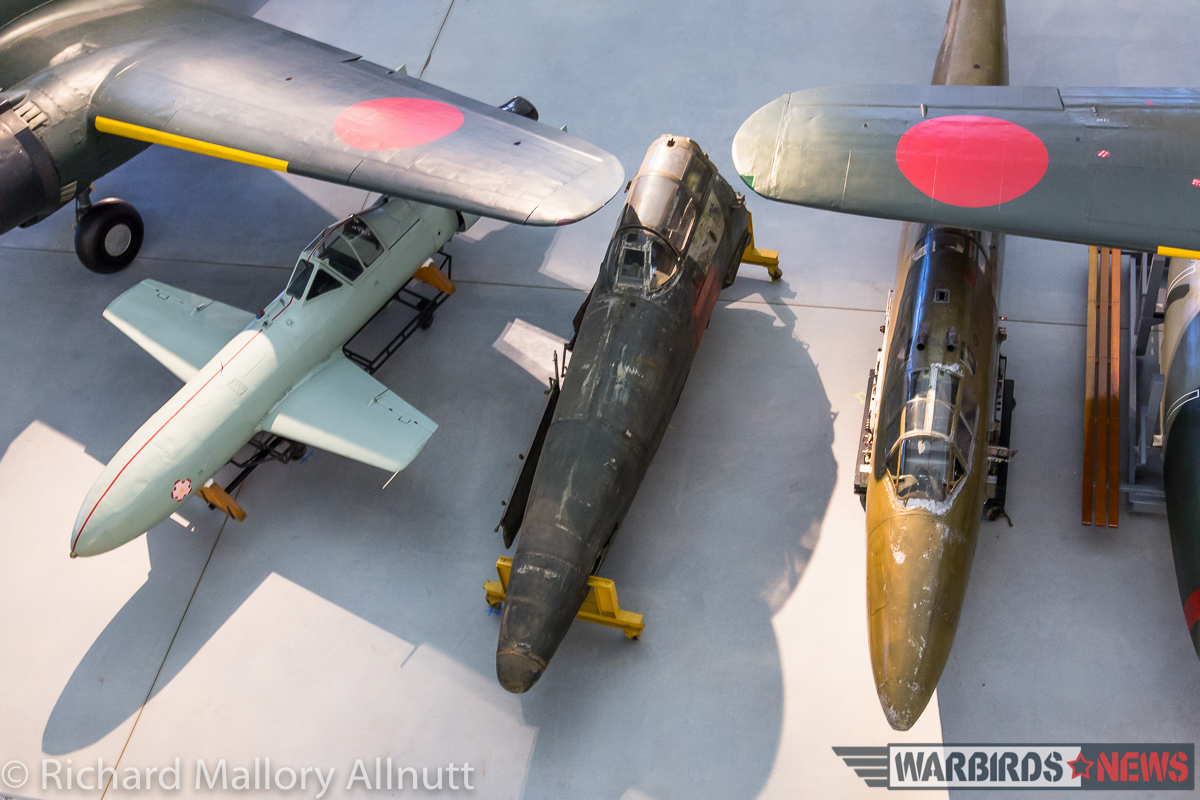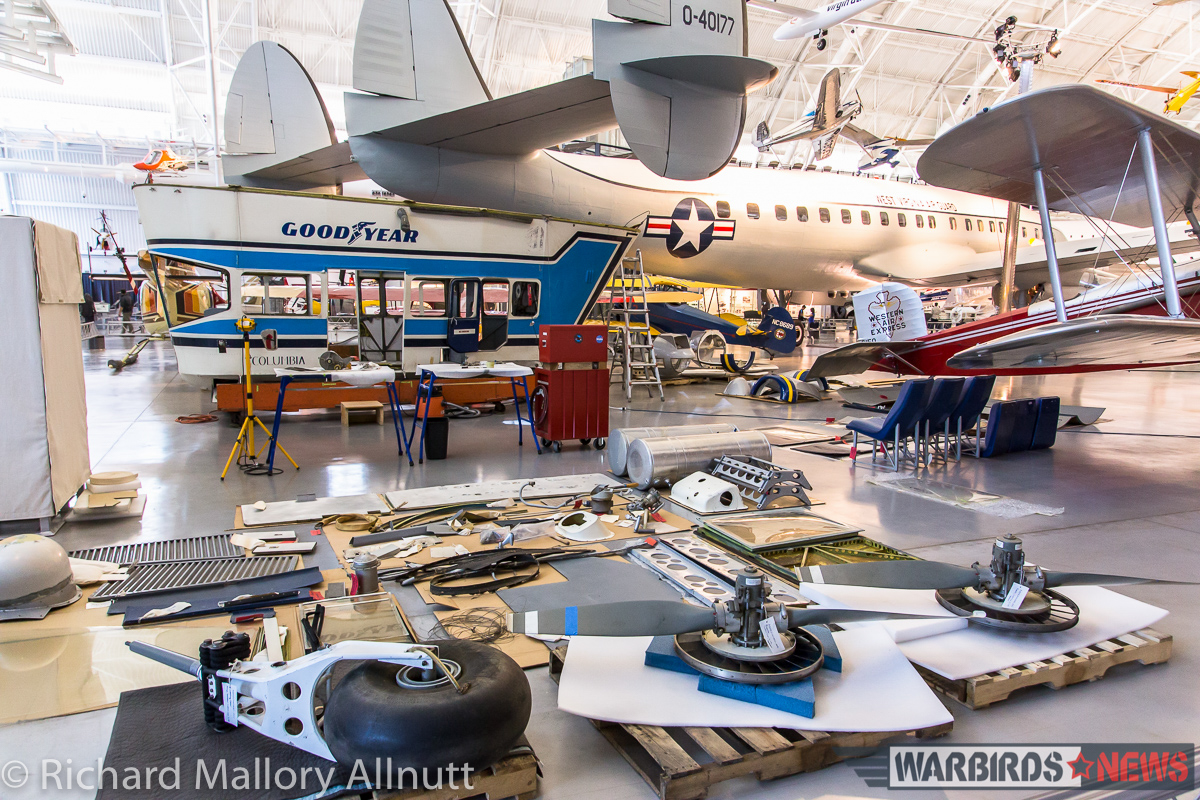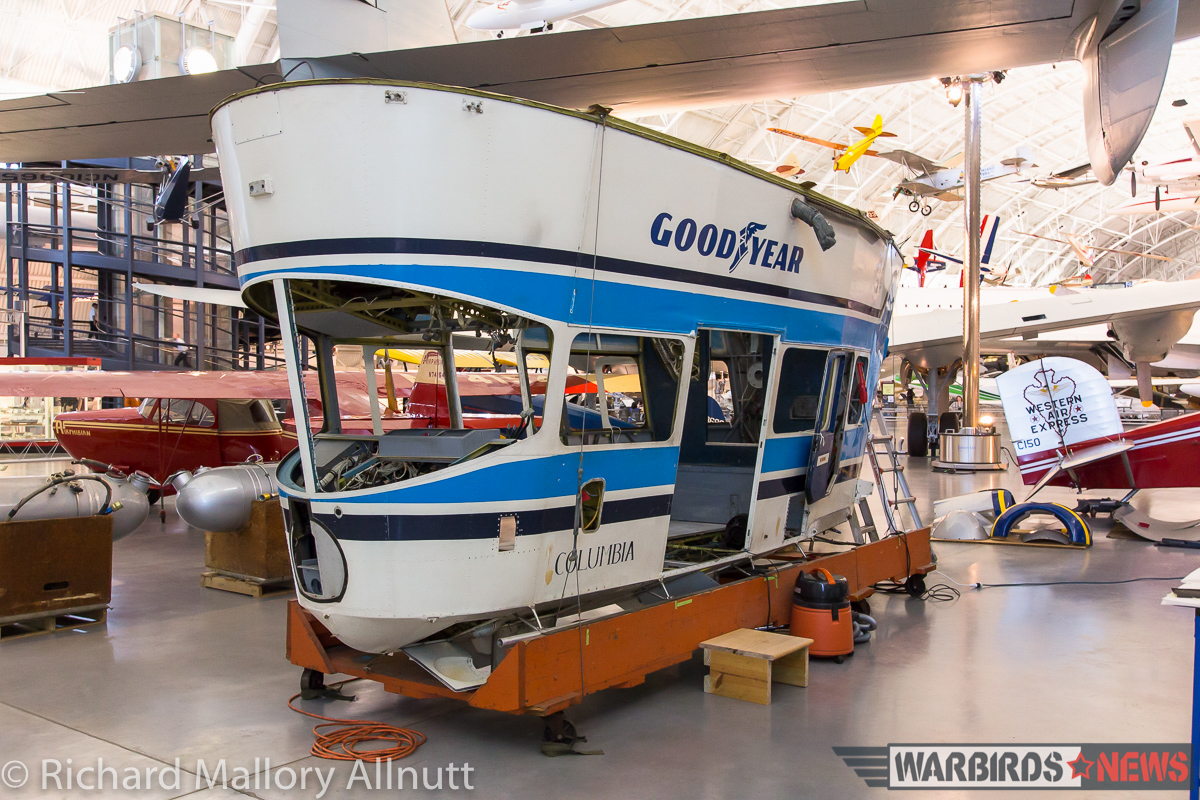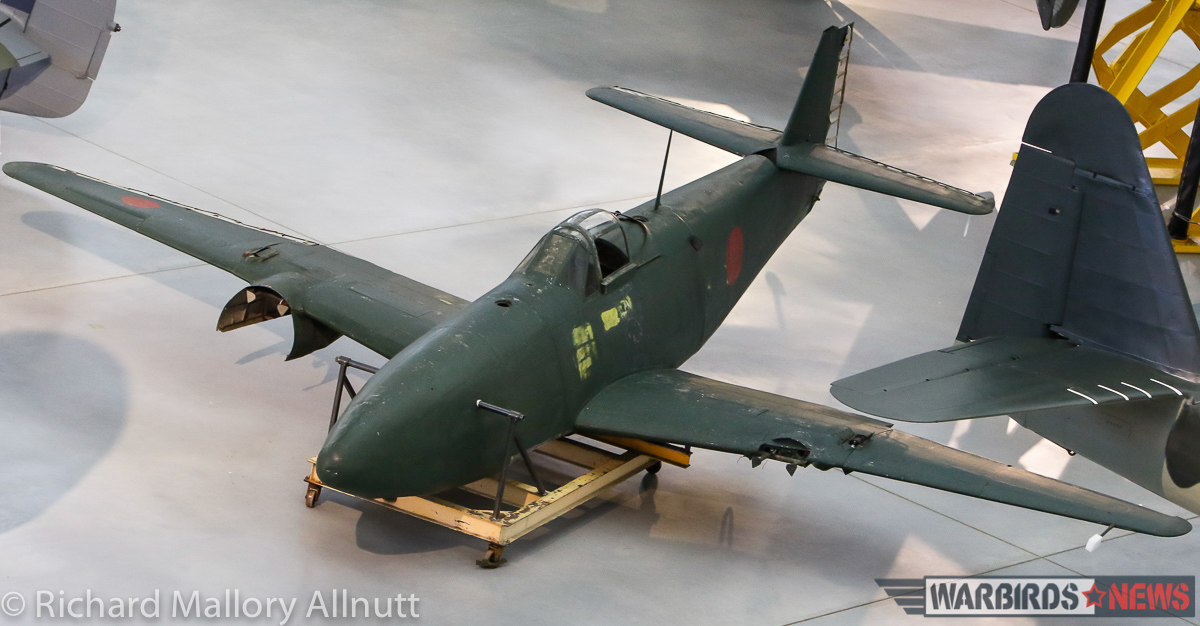
In the damp, early morning darkness on March 15th, staff at the Smithsonian’s National Air & Space Museum wheeled two new exhibits out onto the main display hangar’s floor at the Steven F. Udvar-Hazy Center in Chantilly, Virginia. The museum’s unique, WWII-vintage Nakajima Kikka jet fighter and the recently acquired Sikorsky HH-52A Sea Guard helicopter of more contemporary pedigree had, until today, been far from view within the adjacent Mary Baker Engen Restoration Hangar.
Sikorsky HH-52A Sea Guard serial 1426 has had a storied career, including one major incident on November 1st, 1979, perhaps the most daring rescue in Coast Guard Aviation, in which her crew saved the lives of 22 sailors from a pair of ships which had collided in a blazing inferno off the coast of Galveston, Texas. Somewhat surprisingly, NASM’s new Sea Guard is the first aircraft within the museum’s collection to have served in the US Coast Guard. That the aircraft is at NASM at all is due entirely to the determined efforts of the Coast Guard Aviation Association who, with enormous cooperation from the US Coast Guard, endeavored to obtain and restore an HH-52 for a major national museum. Dubbed the Phoenix Project, the team set about resurrecting HH-52A serial 1426, which they acquired from a helicopter maintenance training facility in Arkansas in April, 2015, along with a pair of spares ships from the Aberdeen Proving Grounds in Aberdeen, Maryland. Understandably, given her lengthy service, and time as an instructional airframe, 1426 had a lot of problems which needed rectifying, including many missing parts and significant structural corrosion. The Coast Guard made space and equipment available for the work at their base in Elizabeth City, North Carolina. Restoring the H-52 was a mammoth effort involving thousands of hours in labor from a volunteer force comprised mostly of retired and active Coast Guard service personnel as well as contractor VectorCSP. The restoration crew broke the helicopter down into its basic components, and emptied the interior until the airframe was nothing but a shell. They then stripped the paint to get a clearer idea of where the corrosion lay, and repaired/replaced all of the damaged structure. Next they chemically treated the aluminum with alodine solution to preserve the base metal, followed by a complete re-coating in the paint booth at Elizabeth City. Then came the painstaking process of refurbishing all of the interior components, and re-installing them in 1426. The level of detail in this restoration is second-to-none, and it is a major accomplishment considering how quickly the project has proceeded, from first concept to final product in just ten years, with all of the restoration effort in just the last year! (For a blow-by-blow report on just how extensive the effort to refurbish this magnificent helicopter into its present condition, please visit the Coast Guard Aviation Association’s website HERE.)
There will be a formal unveiling ceremony on April 7th, which will see the helicopter dramatically suspended at the north end of the hangar, as if in flight, with the rescue basket lowered from the open door (which will allow visitors to see in from the upper gallery walkway). Many Coast Guard retirees, including some of the crew members from 1426’s famous rescue mission will be in attendance, at what will be one of the key celebrations of the 100th anniversary of Coast Guard Aviation this year.
The Nakajima Kikka is now out on the main floor, but perhaps frustratingly to some, she is surrounded by other aircraft at the moment, so it isn’t easy to get quite as up-close-and-personal as might be desired. Museum staff felt that she should be on public display though, and there will be better access to the aircraft once a more formal position is available. With so many aircraft already crowding the massive hangar, it does take considerable thought and physical effort to juggle the exhibits around into a logical arrangement, so we must be patient. The aircraft is in frail condition, which is perhaps why she currently sits on a dolly, rather than her undercarriage. She is also incomplete, although the museum does have an original Ne-20 engine for the Kikka, and did remanufacture some wing bolts to allow the outer wing panels to be fitted. The NASM’s Kikka is the only survivor of any Japanese WWII jet designs, and is very loosely based on the German Messerschmitt Me-262 plan form. The museum’s Kikka is comprised of components from several different airframes, but recent evidence suggests that the fuselage, at least, is from the one example which did actually fly.
Several other aircraft have also moved into the main hangar at the Udvar-Hazy Center in the last few months, including a Bell AH-1F Cobra which flew over 2,100 hours in combat during the Viet Nam War, featuring one mission which saw her pilot awarded the Silver Star for bravery. The National Museum of the Marine Corps‘ CH-46 Sea Knight is also on display (on long-term loan) at the north end of the main hangar. Another recent addition is the forward fuselage of the revolutionary pusher-propeller fighter, the mighty Kyushu J7M1 Shinden, laid out beside several other unique Japanese WWII aircraft. And at the south end of the main display hangar is the gondola from Goodyear Blimp ‘Columbia’, which covered many Super Bowls in the 1980s, starred in the 1976 film ‘Black Sunday’, but amazingly began life as the prototype of the breed back in 1934 when she was named ‘Enterprise‘! The gondola is currently under restoration with parts laid out around her for the public to watch as she goes back together. Work also continues on projects within the restoration hangar, but this will remain as a feature for a future article. The Udvar-Hazy Center is a fascinating place to be, and is worth regular visits to see the latest changes! We look forwards to bringing you more news in the coming weeks as the hard-working team at NASM progresses with various projects, most notably with the restoration of the Martin B-26 Marauder known as Flak Bait.








